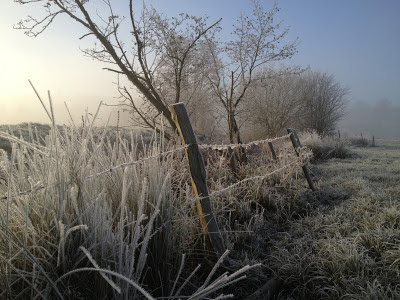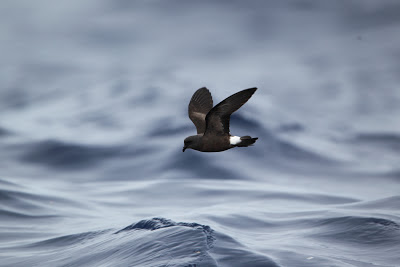Thrushes are one of my, and many birders, favourite
groups of birds and the eastern species are perhaps the jewels in the crown so I thought I would fill a quiet time in the birding calander with a little fantasy of
what could be for those scanning diligently through redwing and fieldfare flocks or
perhaps just born of good luck. Here I post on the thrushes from the
east that have occured in the UK, a number of other species have occurred in
Europe but not yet in the UK but can be expected, perhaps, at some time or
another, these species will the subject of a second post to be published
shortly. The systematics in this post follows Volume 10 of Handbook of the Birds of the World.
Naumann's Thrush Turdus naumanni
Naumann's thrush is frequently considered conspecific
with dusky thrush due to the wide overlap in their ranges where hybridisation occurs. Naumann's breeds further
south than dusky and winters further north and is thus a shorter distance
migrant. In the breeding range the northern populations are those that overlap with and hybridise with dusky thrush. Naumann's thrush breeds in southern central Siberia
and winters in south-east Russia to southern China.
In the UK there are two records of Naumann's thrush the first from Woodford Green, London from 19th January to 9th March 1990 and the second from Woodford, London from 6th to 11th January 1997. London is THE place! But this bird could surely show up anywhere, perhaps an east coast location is more likely but clearly another wintering bird could be on the cards.
Naumann's thrush has brownish upper parts admixed with
rufous particularly on the margins of the secondaries, greater coverts and tail
feathers. the underparts are extensively rufous with pale fringes to the
feathers, notably, the flanks are extensively marked rufous and this serves to distinguish the species from rufous-throated thrush. There is normally a
rufous tone to the supercilium and a dark malar stripe and malar patch.
Naumann's Thrush
More photos and footage of Naumann's thrush can be seen here:
http://ibc.lynxeds.com/species/naumanns-thrush-turdus-naumanni
Dusky Thrush Turdus
eunomus
Dusky thrush is, in effect, the northern equivalent (but
with the range extending further east and west) of Naumann's thrush. Although often lumped with Naumann's thrush (and then both are referred to as dusky thrush), dusky thrush is phenotypically distinctive, although hybrids occur. As a result of the greater
distance that the species migrates this is a more frequent. but still very
rare, visitor to the UK.
In the UK there have been nine records from 1900 with the most frequent location being Shetland with three records from 1961 to 1975. The last record was a one day bird on 9th December 2010 in Manchester. Records are spread from 24th September to 23rd March with the majority in December. The next twitchable bird will be greatly admired.
In plumage pattern dusky thrush is similar to Naumann's,
however, the rufous scaling on the underparts is replaced by blackish scaling which as the pale fringes where become progressively darker. The rufous tones on the head and tail are much reduced and
dominated by darker tones. The mantle is also scaled darker. However, there are extensive rufous edges to the tertials, secondaries and wing covertes forming an extensive rufous panel which is reduced in Naumann's thrush. The overall
appearance is of a, fittingly, more dusky and darker species than the cleaner
more rufous Naumann's.
Dusky Thrush
More photos and footage of dusky thrush can be seen here:
Rufous-throated Thrush Turdus ruficollis
The rufous-throated (or red-throated) thrush is often considered conspecific with black-throated thrush, due to an extensive zone of hybridisation where their ranges overlap, however, the two are distinctive based on plumage and vocal differences. The breeding range of rufous-throated thrush extends from central Siberia south to north-west China and with the wintering range in north-east India and southern China. Both these ranges are located to the east of the respective black-throated thrush breeding and wintering ranges. Within the western parts of the breeding range lies a zone where much hybridisation with black-throated thrush occurs.
In the UK there has been a single record of rufous-throated thrush, from 29th September to 7th October 1994 at The Naze, Essex.
Rufous-throated thrush is readily distinguised from black-throated thrush by its rufous throat and supercilium and by the rufous fringes to the tail feathers. Naumann's thrush has a rufous wash and scaling extending to the flanks, lower breast and belly. However, due to hybridisation between this species and black-throated and Naumann's thrush a range of intergrades may occur and care is required in identification.
Rufous-throated Thrush
More photos and footage of rufous-throated thrush can be seen here:
Black-throated Thrush Turdus atrogularis
Black-throated thrush is often considered a race of rufous-throated thrush due to the extensive interbreeding within the area of range overlap in the two species, however, phenotypically and vocally the species are distinctive. Black-throated thrush is the more westerly distributed of the two, therefore, it is unsurprising that black-throated thrush is by far the commoner in the Western Palearctic. Its breeding range extends from eastern European Russia east to Central Siberia and south to north-west Mongolia. It winters in from Iran east to north-west China
Black-throated thrush is a rather dull grey above with darker centres to the tail and wing features. In the adults the throat and upper breast are black, in the female this is more mottled and less clean than in the male. The lower breast and belly are off white. The immatures are duller more olive above with the black throats scaled paler in the male and in the female confined to and dark malar area and blotches and streaks on the upper breast extending to the flanks.
In the UK there are a total of 70 records with 68 since 1950. Amazingly, but unsurprisingly, 28 of these records are from Shetland with six from Yorkshire and five each in Norfolk and Scilly. Records extend from September to May with the peak month being October but there have been around 10 overwintering birds.
Black-throated Thrush - Adult Male (above) (Johan Stenlund - see more of Johan's stunning images and useful identification guides here
http://www.pbase.com/johanstenlund)
First Winter (below) (Chris Thomas - see
More photos and footage of black-throated thrush can be seen here:
Eyebrowed Thrush Turdus feae
Eyebrowed thrush is a rather drab thrush with both
sexes being a rather uniform brown with a paler vent and belly with distinct
white supercilium and with a rusty flank and breast. There is a distinct, but variable, pale supercilium
and a pale crescent below the eye. Adult males have grey heads compared to the
females browner heads. First year birds, of which the majority of UK records are, have a brown
head like the adult females with rusty flanks and a variable pale greater covert
wing-bar.
Eyebrowed thrush breeds from western Siberia
eastwards to Kamchatka where it commonly breeds in pine and spruce forests and
winters in south-east Asia from southern China, through Thailand, Malaysia and
the Philippines.
There are 19 records of eyebrowed thrush in the UK with the first in 1964. Records of the species are from April, May, September, October and December with the lions share of records from October. Perhaps surprisingly the Isles of Scilly, with seven records, out-do Shetland with two records - a strange pattern for an eastern thrush.
Eyebrowed Thrush - Immature Female (above) and Immature Male (below)
More photos and footage of eyebrowed thrush can be seen here:
Siberian Thrush Zoothera
siberica
Siberian thrush is an enigmatic species which most
birders latch onto in a field guide at an early stage in their hobby as a must see species, but in the UK this
is a difficult species to catch up with with only nine further records since the first in 1954. Records extend from 18th September to 25th December with October being the peak month. There are two records each from Shetland, Orkney and Norfolk so east coast or remote islands is the key. The last twitchable bird was on the Isles of Scilly in 1999 which shared the tiny island of Gugh during its four day stay with a White's thrush.
Adult males are a deep, dark slaty grey tinged blue with
a white eyebrow which extends backwards from the bill base and with
a scaly white vent. Immature males are similar but less striking with less
vivid slaty grey upper parts, pale throat and scaly underparts. The females and
immature females are brownish with scaly underparts and vent with a pale
supercilia. All sexes and ages have the diagnostic banded black and white underwing typical of Zoothera thrushes..
Siberian thrush has a similar range to eyebrowed
thrush breeding from Siberia eastwards to Ussuriland and winterimg in
south-east Asia.
Siberian Thrush
More photos and footage of Siberian thrush can be seen here:
Common Scaly (White's) Thrush Zoothera
dauma
The only other Zoothera thrush to be recorded in the British Isles is common scaly thrush, more commonly known as White's thrush to British birders, this name has a greater air of mystic. Like siberian thrush, White's thrush has the distinctive black and white banded underwing characteristic of Zoothera thrushes. White's thrush has a wide breeding range extending from the Urals to Ussiriland in Russia, north Japan, north Korea and north Mongolia. A discrete breeding population in the Himalayas may prove to be a separate species. White's thrush winters in north India, much of south-east Asia, south China and south Japan.
This is our most frequently occurring eastern vagrant thrush with a total of 79 records in the British Isles with 47 from 1950 until the end of 2010. There are records in all months with the exception of March, July and August with the majority of records in October. Records are widely distributed with, perhaps unsurprisingly, Shetland and the east coast taking the lions share but there are a number of inland records and the Isles of Scilly has had two records since 1950, with one pre-1950 record.
Highly distinctive, an experienced birder will surely not mistake the intricately scaled plumage for any other species. The crescent scaling on the flanks, mantle and rump and the bold buff fringes and tips to the wing features are particularly striking.

White's Thrush
(Alex Varga - See more of Alex's Stunning
More photos and footage of White's thrush can be seen here:






























